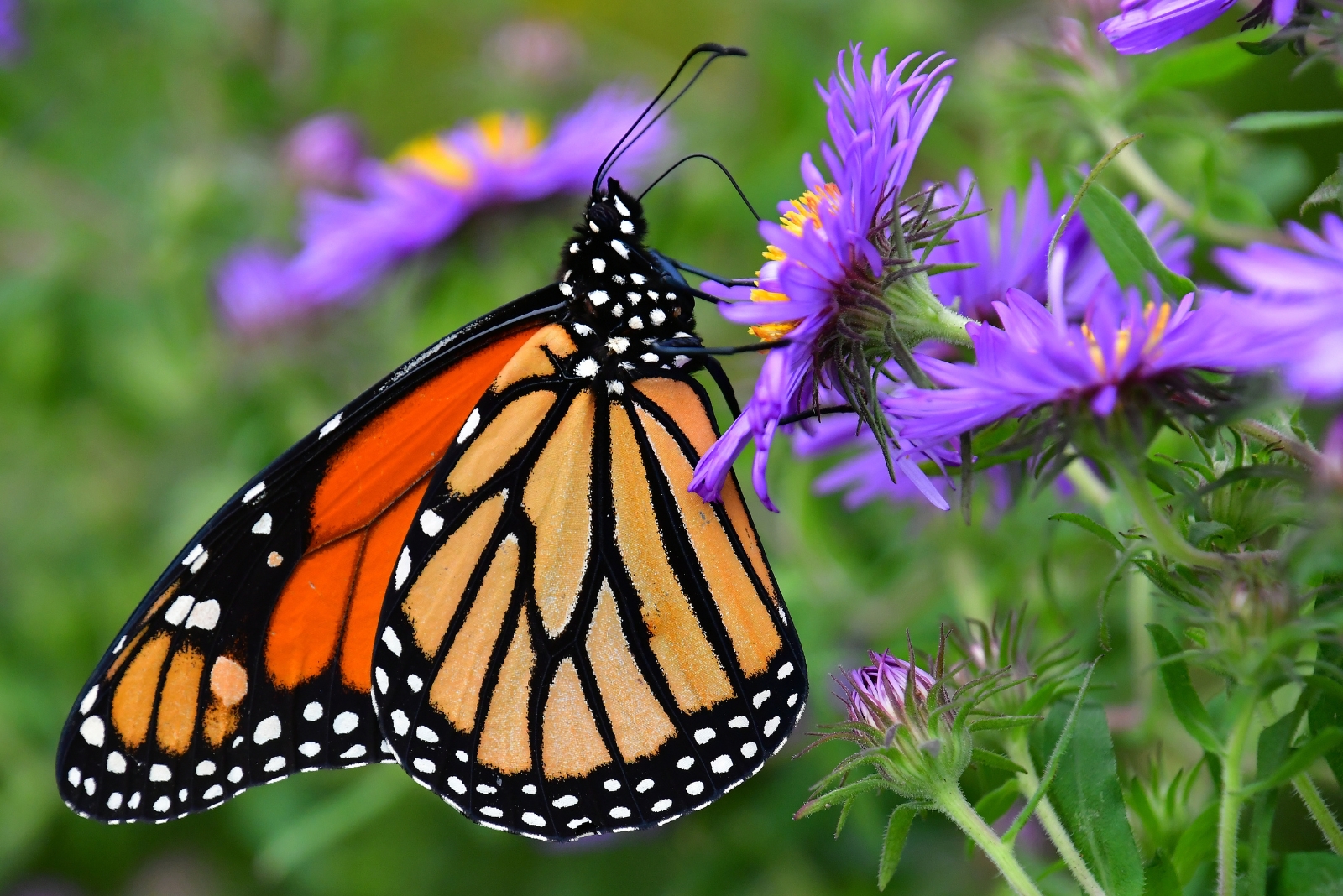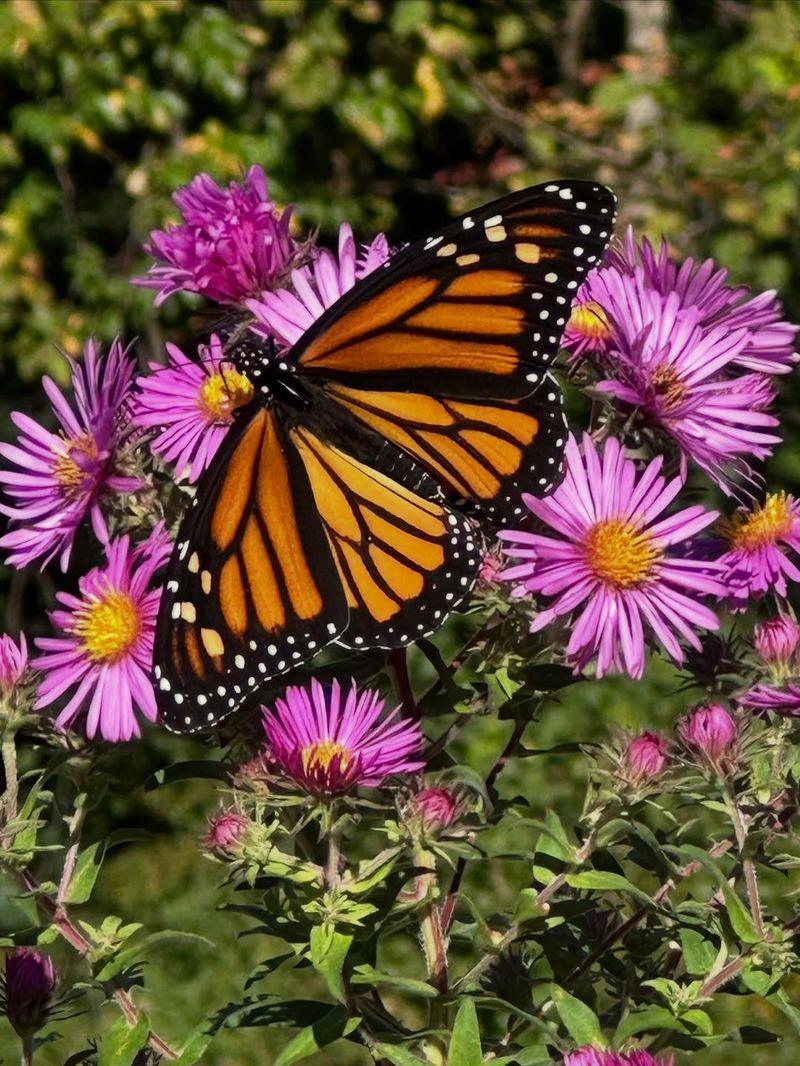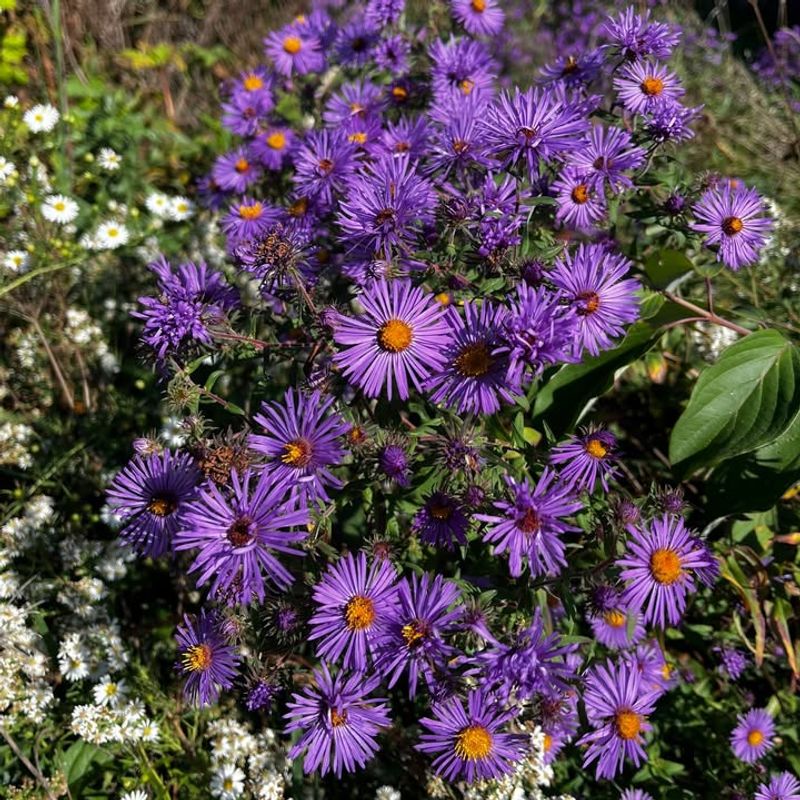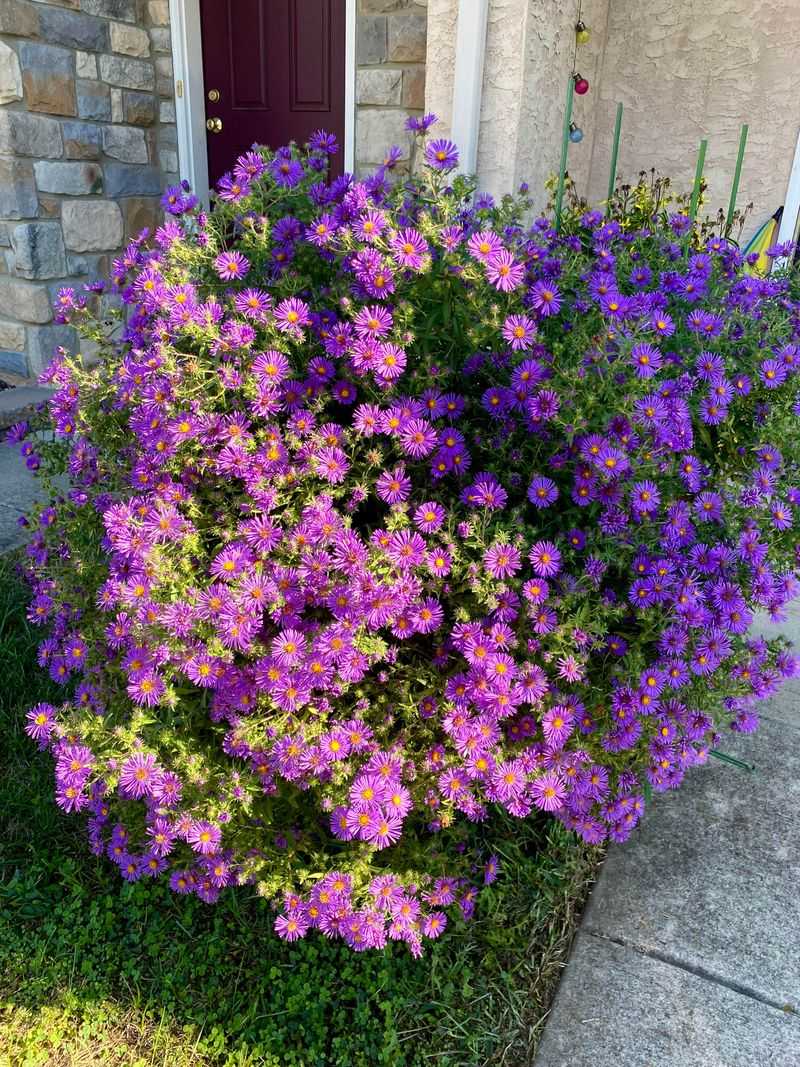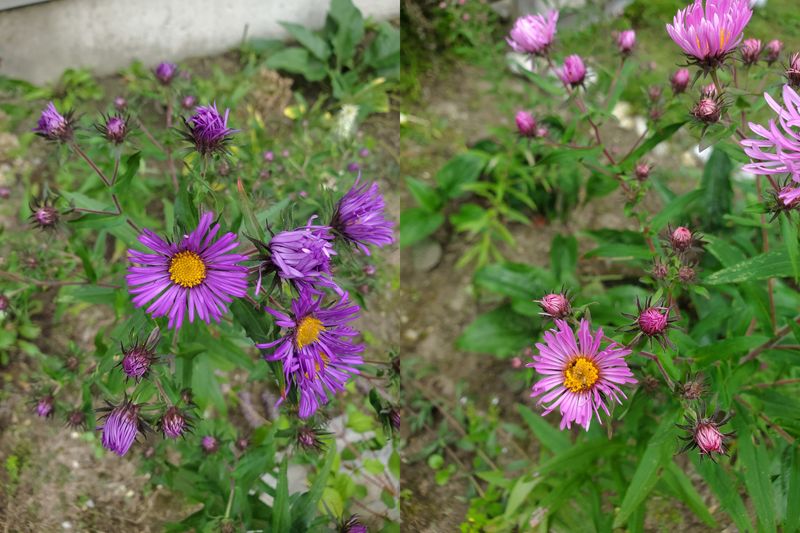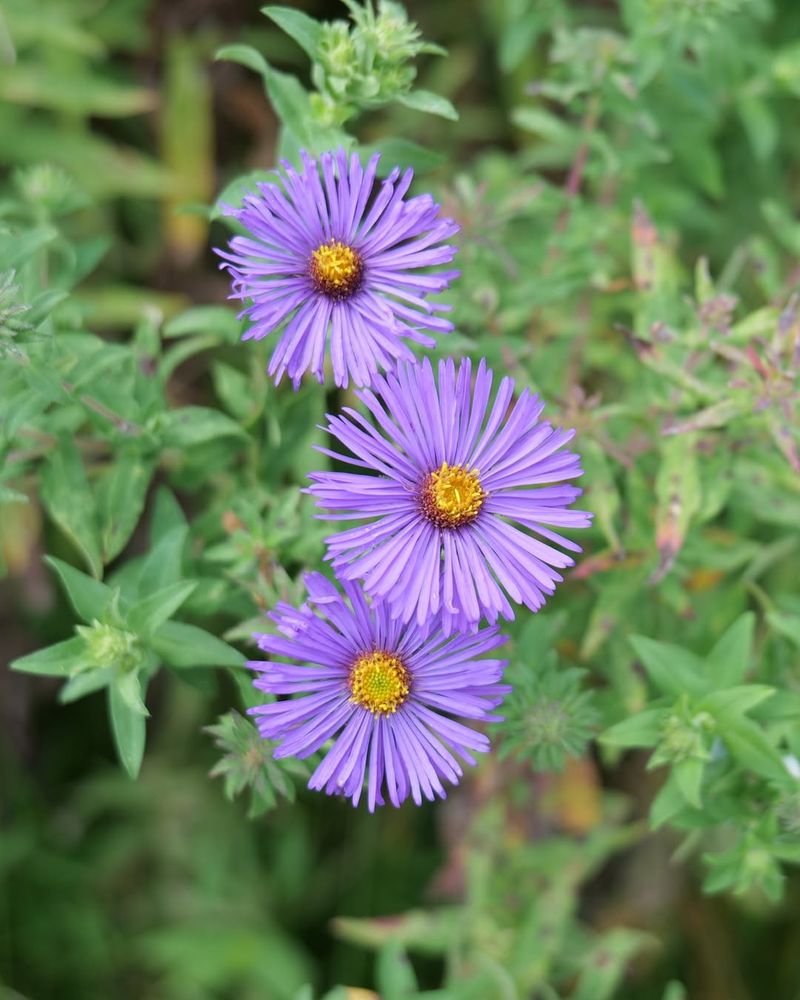Butterflies are back on the move, and Iowa’s native landscapes are buzzing with life. If you’re hoping to turn your garden into a pollinator magnet this season, the secret lies in planting what local butterflies love most—native blooms that feed, shelter, and support their entire life cycle.
One late-season favorite that never fails to draw a crowd of fluttering visitors? The stunning, nectar-rich New England aster.
1. A Butterfly Magnet In Your Backyard
Butterflies absolutely love New England asters, especially when food sources become scarce in late fall in Iowa. Monarchs, painted ladies, and swallowtails visit these purple blooms daily to fuel up before migration or prepare for winter.
The flowers produce abundant nectar that gives butterflies the energy they need. Planting these native beauties in your yard creates a butterfly paradise right outside your window. You’ll enjoy watching colorful wings flutter around from September through October when little else is blooming.
2. Blooms When Others Have Quit
Most Iowa garden flowers call it quits by late August, but New England asters are just getting started. They burst into bloom from September through October, sometimes even into November if the weather stays mild.
Their timing makes them incredibly valuable for pollinators preparing for winter. While other plants have already dropped their petals and gone to seed, these asters keep producing fresh flowers. Gardeners appreciate having something colorful to look at when everything else looks brown and tired.
3. Tough Enough For Iowa Weather
Iowa weather can be brutal, with scorching summers and freezing winters, but New England asters handle it like champions. Being native to the region means they’ve adapted perfectly to local conditions over thousands of years.
They tolerate drought once established and don’t mind clay soil that frustrates many gardeners. Cold temperatures don’t faze them either since they’re hardy down to zone three. You won’t need to baby these plants or worry about them dying during temperature swings.
4. Purple Flowers That Pack A Punch
Each New England aster flower looks like a tiny purple daisy with a cheerful yellow center. The blooms measure about one to two inches across and grow in clusters at the top of tall stems.
Their vibrant purple color ranges from deep violet to lighter lavender shades. When planted in groups, they create stunning drifts of color that brighten up any Iowa fall landscape. The flowers practically glow in the afternoon sunlight, making your garden look professionally designed without much effort on your part.
5. Easy To Grow For Beginners
You don’t need a green thumb to successfully grow New England asters in your Iowa yard. Simply plant them in a sunny spot with decent drainage, and they’ll practically take care of themselves.
Water them during their first season to help roots establish, then they become quite drought-tolerant. They rarely suffer from serious pest problems and don’t require fancy fertilizers or constant attention. Even kids can help plant and care for these forgiving flowers, making them perfect for family gardening projects.
6. Supports Local Wildlife Beyond Butterflies
While butterflies steal the spotlight, New England asters feed many other creatures too. Native bees, including bumblebees and sweat bees, visit the flowers throughout the day collecting pollen and nectar.
Later in winter, songbirds like goldfinches eat the seeds that form after blooming finishes. By planting these asters, you’re essentially setting up a wildlife buffet that operates across multiple seasons. Your Iowa garden becomes part of a healthy ecosystem that supports biodiversity right in your own neighborhood.

